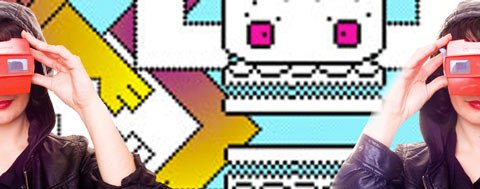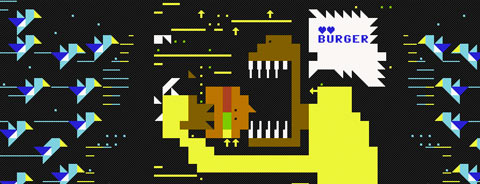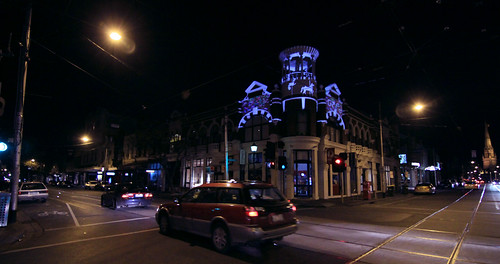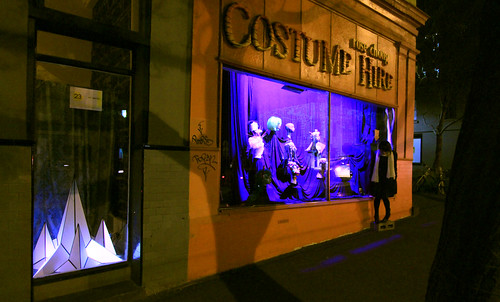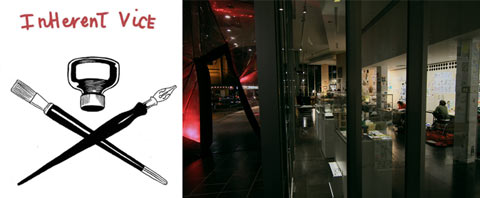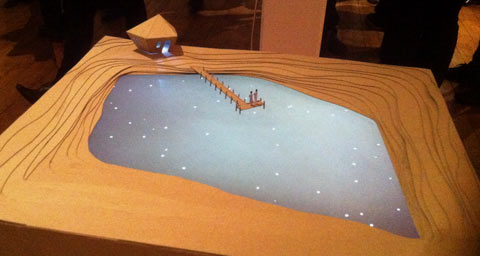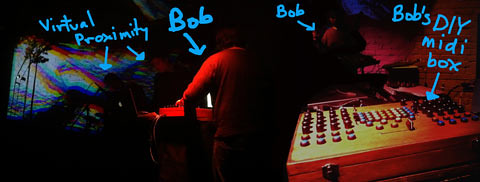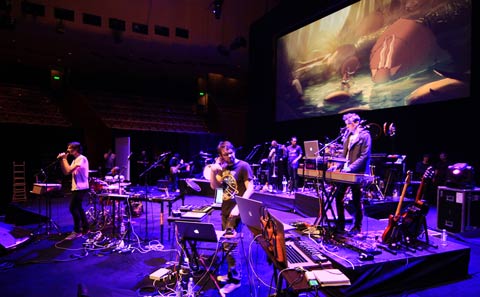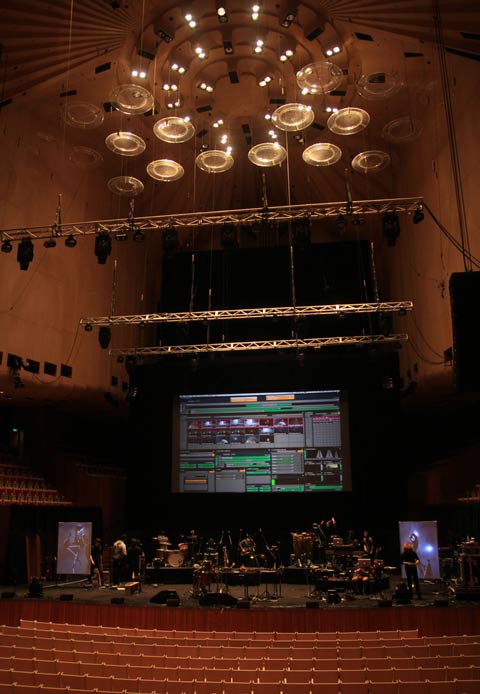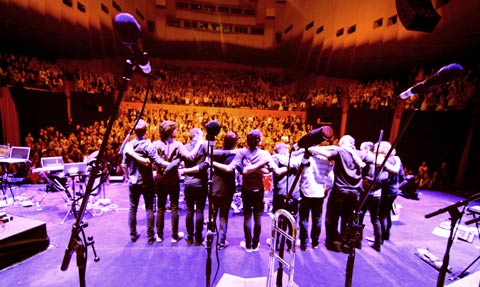Reasons you might find yourself wanting to read this very long but very awesome Raquel Meyers interview:
– Because you love 8bit graphics and people who push them to their limits
– Because Raquel makes rad stuff ( eg her recent DVD of ‘fighting washing machines and killer lego ducks’, full of videoclips, remixes and collaborations with chiptune musicians and pixel pushers – Useless Yet Crucial).
– Because you want to find out about her ascii storytelling experiments with the C64 shredding musician Goto80.
– Because you love reading about how artists wrestle with their processes.
– Because you need a crazy and wonderful collection of visual links in your day.
Who knows, but I hope you enjoy these responses as much as I did. Thanks Raquel~!
– What’s inspiring you these days?
At the moment I am experimenting with storytelling and text-based graphics like Ascii, Ansi, Petscii and Teletext with Goto80. I’ve changed both the tools and the purpose of what I’m doing during the past months. I guess what I’m doing now is formally similar to text adventures, cartoons, silent movies, text art, demos…
I’ve been mostly inspired by animations and short movies from the 20th century, like “Little island”(1958) by Richard Williams or “Cowboys”(1991) by Phil Mulloy; and also, children’s books. Because of the brutal style of the “Simple storytelling”, the combination of a drawing plus a short phrase who builds a full dream up. This one makes me think about 2 frames animation, and how something simple it become even more brutal, especially working with the C64.
In the case of the short movies, the animation comes before the music, so the video is not the slave of the music (music video style). Sound effects increase the tension and the verve of the animation, and could be use in a shorter way like an interlude, or something longer. But the main thing is the story behind it, whit out it you cannot go further.
A cinematic new age terror is coming!. It operates in text mode, only using characters of the Commodore 64 and Amiga. This applies both to the graphics and the music.
[[ EDIT: Terror is now live – witness “2SLEEP1”, a “66-minute playlist of audiovisual performances in text mode, designed to make you fall asleep. Press play, go fullscreen and lie down. Made by Raquel Meyers and Goto80.” screenshots below:]]
– What hardware and software do you use to create your animations?
I use several computers. A C64 with Letter Noperator and DigiPaint. An Amiga 1200 with DPIV, Brilliance, Prism and also an Amiga 600 provided by Archeopterix. A PC and Mac, with Flash, Photoshop, video editors and the (unreleased) petsciibrush software made by Linde. Soon I will add a Teletext device.
I’m not a gear freak. I don’t really care about the tools. I used to work primarily with Flash and Photoshop, which was a pain in the ass for the things I was doing. But I still liked it. Now I use old things (Amiga and C64), and that’s also quite painful sometimes. So to answer the question – I blend old and new technologies. It doubles the pain!
I am not a purist, I am a blender.
– How much of your creative process is defined by the limitations of such technologies?
I prefer to talk about possibilities instead of limitations. I think the technology is not the limited one, is the human behind it. It doesn’t matter how old or new the technology is, there is always something new to discover and learn. It’s not a such a big thing to use old technology, it doesn’t make everything more special, different or better. In my case, I use it because I like it.
But the things I do in Flash are different from what I do on C64. So the process is different. But I don’t really like to think too much about those things.
– Is there some cut-off line for retro computer graphics, where they are too new for you to use? What is it about 8-bit that manages to sustain appeal for you?
At least not for me, I’m not interested in the retro version of 8-bits, so I don’t think about if something is too new to use or not.
I remember playing pong with my brother in the TV console, meet my friends at ‘ la sala de máquinas’ and how I had stuck in my head every night before going to sleep the Tetris song. I grow up with arcade games and graphic adventures but, it wasn’t until 21 century when I discover a C64 music archive on Internet, and all these memories becomes something else because of the music.
It wasn’t a revival, it was something else, the imaginary frame in my head that before was a picture now become pixels looking for to be animated.
I don’t really know, but I think what keeps my interested in 8-bit is the brutalism. Big blocky objects, raw animation techniques, few frames, cuts, etc. I think it’s better if the animation method is brutal, because then it contains so much more than with some detailed video where there’s less room to think on your own.
– What do you find interesting about making live visuals versus production work?
A Live Performance is always open to improvisation and mistakes, meanwhile production work is always under control in the time line. You can rehearse or planning live visuals but at the end you don’t know what is gonna happen. Is really fun put yourself in a non control mode, keeps the spark. And since I don’t really use VJ-software to perform, it’s always a challenge.
– What work have you done on combining and compositing 8-Bit and recorded video together?
As part of Entter (2000-2007), the video clip Fantasy’ by Goto80, and ‘Dietetic Music’ by Eat Rabbit with graphics from Otro. Both of them were my earliest works in the 8-Bit, 2004 and 2005. Based on video recordings and post-production. In latest video clips, I mixed photo animations and graphics like the ‘Droidduck’ by Psilodump (2010), ‘Pink Snow’ by La belle Indifference (2010) and ‘Polybius’ by tr1c3 (2010), based on the main live cinema project ‘Polybius’ with Goto80. Also parts of the vj set contains video and graphics mixed. The reason of that is because my first background was Analog photography. I started when I was 14 years old, with black & white films and experimenting in the lab. The first thing jumping in my mind is always a static picture, a frame. My work is based in the movement or animation of such frames.
– Can you describe your AV set with musician Goto80, Polybius? ( and your aims behind it?)
Polybius …. the idea came from a post I read in my brother’s blog in 2007. The post was about an urban myth about an arcade game from the 1980s (Polybius) that created a sensory and cognitive deprivation in its users. So I started to talked with Goto80 about it and how much I would like to do something with it and with him. The basic idea was explode the links between fiction and reality by encouraging a loss of senses. But it was not until 2009 when the french collectif ‘Homemade’ invited me for a 2 weeks residence at Le maki (Angoulême, France) when the Polybius experience become something else tahn talks. I developed there a first 20 min version, using a ‘cute’ character like a rabbit to hide my really epileptic and apophenic purpose, and Goto80 was working in the audio online from Sweden. The project was officially presented at the Cimatics festival the same year.
In the beginning of the 2010 we develop together in Berlin the second version who combines line vector aesthetics with video manipulation and 8-bit technology to induce feelings of apophenia, amnesia and panic. The Polybius experience – invented and created by us in the form of a white rabbit with a sectarian-politonic-track to be stuck in your head.
[[ Tangent alert! See also: previous ‘C64 Shredding interview with GOTO80‘, and ‘Cappadocia Skies‘ – a clip I’d made about a hot air balloon ride, with music by one of GOTO80’s aliases, Extra Boy. ]]
– What’ve been the challenges of developing that, and what has worked or not, when performed live?
One of the biggest challenges was working in the distance via Spain-Berlin-Sweden thought Internet. Because we build the project together from the beginning and sometimes was really difficult to define and create the content without being in the same place. When we presented the project at Cimatics, we realized we need to meet physically to develop a second version and special place to performed it, out of the club experience. So in the beginning of 2010 we meet in Berlin for a week to prepared the second version, because we were invited by the PlazaPlus Festival in Eindhoven NL to performed it in january. We made a special pass before for the visualberlin collective at fh.meppen (Berlin) to test the extended version of 32min and got feed-backs from the public. The third and last version is pending, who icludes the physical game and an installation. But for this we need budget and maybe a residence to develop it. It’s one of the most complicated projects I have ever done.
– To what extent are you able to adapt the visual side of that with each performance?
My set is manual. To be able to adapt to whatever happens in the live performance. Before I was only using one laptop running an aplication who host all the visual content (graphics, animations, videos …) controlling by hand with the keyboard. So the rhythm was build in the way I click on the keyboard and load the different content. Now I’m working in a new set, who consists in a C64 and an Amiga, still in process, so I used the laptop as extra support with the same technic. A video mixer is used to change the sources, but there is not so much effects involve. The thing that takes more time is making all the animations, graphics and videos. I only used my own material, and always try to made a special set for each performance.
– Have your computer / animation processes ever entered / filtered / affected your dreams in any way?
Yes it does, because I listen so many times the songs when I’m working with it and also I dream with the animations. But ‘Polybius’ was something really insane, I had one of the tracks stuck in my head, like a trance mode to my own sense deleting experience.
– At the ‘Artists-Who-Inspired-Raquel Meyers’ Award Ceremony, who gets the following awards?
– Visual artist who most steps outside the echo chamber of contemporary styles?
Nam June Paik, the retrospective exhibition ‘The Worlds of Nam June Paik’ in 2001 at Guggenheim Museum Bilbao I saw, put him for me in this category, like the “Magnet TV”.
– Visual artist with the most exquisite and hard to understand technique?
Poison, I know the technique, but is not enough, because even if you use the same software you cannot have the same results. As PETSCII graphician was really impress how he made ‘2frames’ animations and graphics for the C64.
– Visual artist who best gets under your skin? ( transcends technique to grab your emotions ? )
Otromatic, he is my favourite 8 bit graphician. He become one of the reasons why I start to make Lo-fi graphics and animations.
– Best coherent, integrated audiovisual act?
Gangpol & mit. Really impressive performance, one of my favorites. I really enjoy the animations.
But wait, there’s more:
This is something really difficult to do because inspiration doesn’t come only from visuals. They are so many things involve in this process. Here there is some of them, older and newer inspirations:
– Visions of Frank. The dreamlike world of ‘Frank’ a comic by Jim Woodring converted in animations.
– Jan Švankmajer and his surreal animations like ‘Meat Love‘.
– Professor Balthazar, a cartoon series for children, created for television by the Croatian animator Zlatko Grgić. Watching this as a child build a surreal imagery, who come up when you become older.
– Poison, C64 graphician. The ‘Notemaker Demo II‘, all you can do just typing characters.
– Russian and Eastern Europe cartoons (like Suur Toll– Estonia), even if we don’t share the same language, I can feel the eerie atmospheres.
– Bernd and Hilla Becher and their industrial buildings photographies. The motives of my early photographies were the factories buildings from my hometown at night when I was 15 years old.
– Kohei Yoshiyuki and his soft-core voyeur’s manual. 😛
– Stalker, film by Andrei Tarkovsky (1979). This one change something inside me in the 90s.
by j p, September 16, 2011 0 comments

